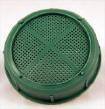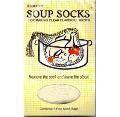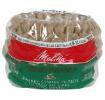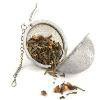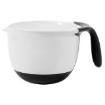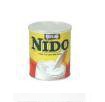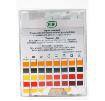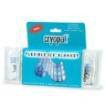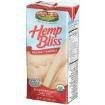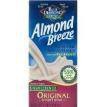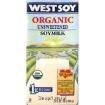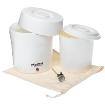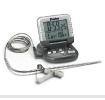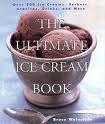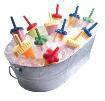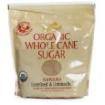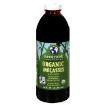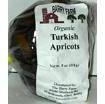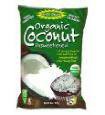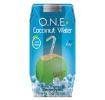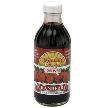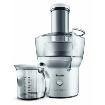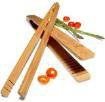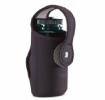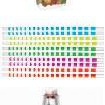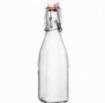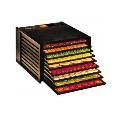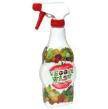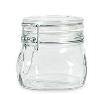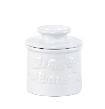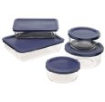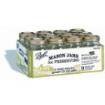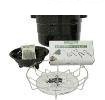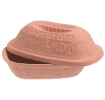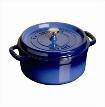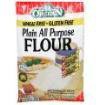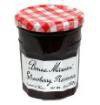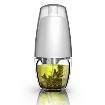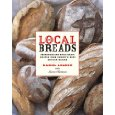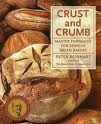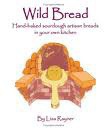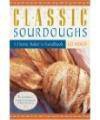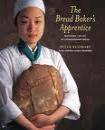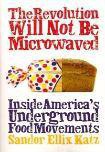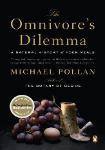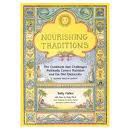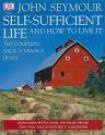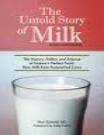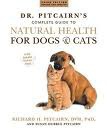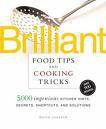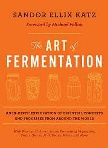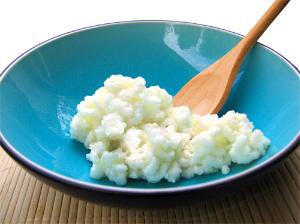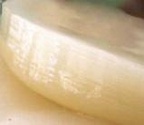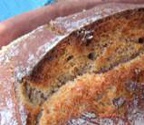































About Us
Ordering
Explore













Recommended Culturing Products
These are all products we recommended from our own research and own personal use.
• Each item is what we've found to be superior in its category.
• All the products in some way aid in fermenting, are sustainable, or are eco-friendly (and in many cases all three).
• We live on a tight budget so you'll find most of our recommendations are reasonably priced as well.
• Have something you think we should recommend? We'd love to hear! Let us know on our contact page!
• All the products in some way aid in fermenting, are sustainable, or are eco-friendly (and in many cases all three).
• We live on a tight budget so you'll find most of our recommendations are reasonably priced as well.
• Have something you think we should recommend? We'd love to hear! Let us know on our contact page!
Milk Kefir / Viili / Yogurt
Water Kefir / Ginger Beer
Kombucha
Sourdough
These icons will take you to culture-specific recommendations. OR view the full recommendations list below.
(click product images to view more details about each item)
(click product images to view more details about each item)
Straining and Filtering
This great little lid is quite functional - it fits most wide mouth mason, Kerr and Ball canning jars
and is perfect to convert your jar into a strainer or sprouter! We also make specialty strainers
and sprouters of our own, which we find work even better. You can find them in our store.
Just tip jar and let the kefir strain out, leaving the grains behind or sprout wheat or other grains to eat and use in making more digestible breads at home. Made of culture-friendly food-grade plastic.
Just tip jar and let the kefir strain out, leaving the grains behind or sprout wheat or other grains to eat and use in making more digestible breads at home. Made of culture-friendly food-grade plastic.
We always have some of this stuff on hand at our home. Cheesecloth (butter muslin) always
comes in handy with straining, and can double as a breathable lid for your cultures. This is the
unbleached, natural good stuff. We love this stuff because you can wash it and re-use it - very
cost friendly and eco-friendly.Also a perfect filter for jelly, cheese making and storage, making
Greek yogurt (thick yogurt) and even meat roasting, basting, stuffing and poaching.
With some of this unbleached natural twine you can make your own bags out of muslin to
hang herbs, garlic etc in to dry, make potpourri bags, use as a natural re-usable bag to hold
loose leaf tea or spices in soup preparation. Also useful in home beer and wine making.
Muslin also comes in already made muslin drawstring bags, which double great as re-usable
bags for keeping any household items like buttons, toys, fishing tackle. We offer packs of these in
our supplies section of our store, too. We like to also use these to carry snacks in, instead of
using (and wasting) tons of plastic bags.
Soup socks are another perfect option for keeping something in thats immersed in some kind of
liquid medium. Soup socks are a lot like the cheesecloth, but they're more stretchy and not as
tightly woven (and also reusable for quite a few times). If you've ever made home-made soup you
know the chicken and bones fall apart everywhere- sticking the whole chicken plus your veggies
and fresh herbs in these stretchy re-usable socks keeps everything intact. What a brilliant
creation. Great for sticking in fruits or veggies for flavoring your kefir or kombucha.
Bulk quantity unbleached coffee filters still remains one of the best (and cheapest) options
for finely straining kombucha to get the most pure kombucha to bottle for drinking, leaving all
yeasty strings behind. Just rest inside a strainer like the one above.
Re-usable stainless steel tea infuser (or soup infuser). Loose leaf tea is so much less expensive,
and there are now so many varieties online and in stores. Or grow your own (chamomile, mint, etc
is easy to grow!) Coupled with this reusable infuser you can really start saving if you love tea.
Excellent stainless steel strainer (culture friendly material). We own one ourselves - the sturdy
strong handle, fine mesh size and multiple size choices of this strainer makes this ideal for
straining kefir and kombucha. Also rests nicely atop most standard bowls due to the hanging
knob opposite the handle.
Bamboo strainers are a good alternative if you want to avoid all plastic and metal materials
when straining your ferments - may or may not work well with milk kefir.
We don't recommend plastic strainers usually because virtually ALL plastic strainers' holes are
too large. This is best for kombucha or water kefir (if your grains are consistently large - though
yeast strings or kefir grains may pass through), has a sturdy handle and is also collapsible. We
do have a special nylon/plastic strainer in our supplies section of our store which works perfect
for all of our cultures and has a finer mesh.
A bowl with a pouring spout and nice grip on the handle and bottom - really nice to have for
collecting your strained ferments and then being able to pour them into your bottling jars. This
one holds 8 cups and even has measuring notches inside - convenient and handy bowl.
Kefir, Yogurt and Cheese Making
It is difficult to find WHOLE milk in powder form. This one is whole, comes from Holland and is
excellent to coat and store dried or frozen milk kefir grains in, to protect them from the elements.
Also excellent to add to your milk kefir to make a creamier, thicker kefir (try 1/8-1/4 cup per pint
or quart). There is also dried whole goat milk for this purpose as well.
The problem with many ph test strips is that due to the hype in testing body acidity/alkilinity
there are many cheap and unreliable 'gimmick' brands out there. If you are wanting to accurately
test the Ph of any of your cultures or even for other purposes this brand is used by chemists and
is as accurate if not more so than as a descent ph meter (unless you're willing to shell out
$200+).
Flexible ice packs - you can cut to fit whatever you need to stick them in or around. This is
great for all kinds of purposes including wrapping around ferment jars to cool them in the
summer.
We like this measuring cup because you can push sticky stuff out of it without touching it with
anything else (great for cultures where contamination is an issue). Perfect for measuring honey,
molasses, yogurt starter, kefir grains or sourdough starter.
This brand of organic flavoring syrups is a delicious easy way to add flavor to your kefir,
yogurt, and of course kombucha and water kefir as well (and popsicles). Of course fresh fruit and
ingredients (or juices) are optimal but for difficult to recreate, fun flavors try the Hazelnut,
Huckleberry, Pomegranate and Irish Creme.
Some people have had good success kefiring with milk alternatives such as goat, soy, rice, hemp and almond milk
with their kefir grains. We recommend these ones for their taste, being unsweetened, gluten-free (some aren't), mostly
organic (not Almond Breeze) and overall popularity and company backgrounds.
If you don't want to bother with all the added ingredients found in most milk-alternative beverages
you can make your own soy, rice, almond (or oat, hemp, bean, etc) milk. This is one of the
highest rated milk machines out there to do the job and is still priced reasonably too, for
everything it can do.
This little cheese press device converts 3 cups of kefir or yogurt into 1 cup of kefir/yogurt
cheese in about 24 hours (which is a nice healthy probiotic alternative to commercial cream
cheese or sour cream).
One of the best cheese books to get as a guide for making (and even selling) all kinds of cheese.
Kefir can be used to make some of the easiest and tastiest cheese.
Just as it says - this is a well-liked easy to read book of homemade cheese recipes: From
Cheddar and Brie to Butter and Yogurt.
This company sells a myriad of wonderful cheese-making kits and supplies (New England
Cheese Making Supply Co). They also have things like acid meters, thermometers, yogurt
supplies, home pasteurizing equipment and refrigerator thermostats.
This is a great yogurt book if you're wondering what to do with all your yogurt (or kefir). It's
filled mainly with recipes to use with your home-made yogurt, such as yogurt dressings, yogurt
dishes, etc.
One of the most reliable, recommended and affordable of the yogurt machines out there. Some
mention that you can place a glass jar inside it too, if you wish to avoid fermenting your batches
in the plastic container it comes with. Makes up to 2 liters at a time.
After discovering that yogurt machines can be finicky and heat up too hot, we've come to rely on
this trusty cooler - also which seems to perform the best for regular cooler usage too
(outperforming other comparable coolers). We just fill it with water thats 110°F, stick in our jars
and in 4 hours we have tons of beautiful home-made yogurt. Of course, there's bigger sizes but
this one holds 4 of the quart jars, which is a good starting amount for most, and fits perfect in the
backseat floor area of a car when you use it for 'real' cooler purposes.
When sterilizing milk that we've found matters is a thermometer that can rest away from the
edges and bottom of the pan, hands free. For some reason its difficult to find clip thermometers -
this one is rated well for accuracy, and has the elusive clip. Digital thermometers can be
unreliable, we always use our basic clip thermometer or a candy/deep fryer thermometer.
Many digital thermometers are unreliable but this one is rated one of the best (and priced well
too).This is excellent for making yogurt or bread. Also comes with the handy clip so that the
probe can rest right where you need it.
Some seriously creative (and yummy basic ) recipes - over 500 ice creams, sorbets, granitas,
drinks, etc in this ice cream book. The best book to get started and get inspired for making any
kind of frozen treat from your kefir or yogurt.
This little ice cream maker gives you the most bang for your buck. This will process up to 4
quarts of ice cream (or frozen yogurt/kefir) at a time. For a fun one for kids, we had to stick this
other one in here too - the Play and Freeze is such a cute idea.
The best and cutest popsicle molds (bpa free). Everyone seems to adore these because of their
perfect size, cute shapes and colors and of course the fact that you can make tasty, fun treats at
home over and over with these. Homemade frozen yogurt, kefir and kombucha popsicles taste SO
much better than regular popsicles of course too! :) Or just freeze some fruit juice in these molds
for a quick cheap summer treat!
Water Kefir LOVES this stuff. Organic whole cane sugar (rapadura), but the water kefir seems
to respond best to this one in particular. They actually compost their sugar cane instead of
heating it (like most other companies), which preserves more of the nutritional value of the sugar,
and is probably the reason the kefir grains prefer this most!
Water Kefir and Kombucha
In the winter, water kefir seems to enjoy blackstrap molasses more (or you may enjoy the
molasses flavor more). In either case, this is a great choice - organic blackstrap is the way to go.
This little guy is called a piloncillo - a popular unrefined pure cane sugar that is perfect for
feeding to your water kefir (with possible origins in Mexico - also where piloncillos originated).
Each cone is the equivalent of 3/4 cup brown sugar - perfect to plop in a ferment of 3 quarts worth.
We've noticed in our tests that unless it is whole cane sugar, any other form of brown sugar
behaves about the same, so sucanat, turbinado or simple brown sugar are equally good (brown
sugar being the most affordable).
If you have soft water or are having trouble kefiring, adding baking soda and/or calcium
carbonate can help supplement your water kefir grains diet to help them function and kefir
properly. This one is priced well and in powder form - easy to scoop the amount you want out.
Organic Turkish apricots are one of our water kefir's favorite fruit. Barry Farm offers many, many
other high quality and usually organic dried fruits to try in your kefir or kombucha as well at very
good prices. You can purchase small or bulk from them.
We've found this to be the most reliable brand for fresh, unsweetened organic coconut shreds
(water kefir likes munching on this, and it makes the flavor delicious). We've noticed many other
brands and even organic bulk bins in stores tend to have rancid/old coconut shreds that do not do
well with the ferments.
We tentatively recommend this coconut water. Compared to the other brands most agree it has
the truest fresh young coconut flavor and is handy to use to make coconut kefir if you cannot
purchase young coconuts. However, the background of this company is vague, and some of the
times we tested this we turned up with rancid coconut kefir. We highly recommend just buying
the real thing if you can.
Knudsen Family Just Juice is our favorite line of juice because it is just that... just the juice of
the fruit on the label! Why so few companies do this is beyond us, but this is healthy stuff and
excellent for flavoring your bottled kefir or kombucha!
Cranberry Juice Concentrate is delicious and has many health benefits (and high vitamin C),
this one is our favorite because no funny stuff is added. Juice concentrate is better for flavoring
than juice in the case of milk kefir since you can use a smaller amount, and not risk diluting or
making the milk kefir too runny and loosing its creaminess. They also make pomegranate,
blueberry and cherry.
For making your own juice (veggie or fruit) this juicer is really the way to go - one of the best
juicers for serious juicing without breaking the bank. For flavoring (and secondary fermenting) with
your bottled ferments this device can really create some interesting and incredibly healthy and
fresh juices. Ideal for fresh grape juice for kefir d'uva and ginger juice for Ginger Beer Plants or
ginger flavored water kefir (most water kefir grains loves ginger).
This is one of the best brands of flavor extracts and amazingly its cheaper than non-organic
store brands when you get it bulk online. For example this Fair Trade Certified vanilla extract is
the product of premium organic vanilla beans grown in southern India by small farmers who are
committed to sustainable, bio-dynamic agriculture. They have many other flavored extracts as
well.
Perfect for loose leaf tea. Fill your own empty tea paper filters and seal them with an iron, or
fold them over the lip of your pot or mug (great for kombucha).
Organic bulk green tea (not loose leaf) at a good price for brewing your kombucha. White tea
lends a delicate and delicious flavor to kombucha too (but is more pricey). This brand also offers
a good affordable bulk white tea.
Kombucha does very well with a blend of black tea and green tea, or all black tea as well. Choice
Organics makes a nice Black Tea.
South African Rooibos (Red Bush) tea is a good option if you are looking for a non-caffeinated tea
to brew kombucha with (some people have good success, though kombucha does best in green
and black tea).
This is an especially great set of culture-friendly bamboo wooden tongs with gentle grips on the
ends- made well and perfect for grabbing your slippery kombucha mushrooms out of their jar
(metal and rubber are less gentle and more slippery to use).
An airlock is a great cheap little necessity if you are thinking of fermenting beer, wine, or lacto
fermented veggies such as sauerkraut or pickles! We make our own sauerkraut with this.This
also helps in bottling kombucha, gingerbeer, and water kefir to build carbonation and prevent
explosion of jars.
This insulated bottle sleeve is great in the winter or summer to help regulate the temperature
of your fermentations such as milk / water kefir or kombucha. Comfortably holds a quart jar.
This is a popular little hydrometer that does the job of measuring sugar/alcohol content of your
brewing (great for water kefir, kombucha, gingerbeer plant, wine or beer). It's a bit fragile but for
under $5 it's quite the deal for how well it works.
A refractometer is more accurate but much more costly than a hydrometer. This is a nice one if
you are wanting to really get into the science behind the brewing of cultures.
When in doubt, just peel it, but otherwise Veggie Wash is a nice way to remove some of the
pesticides, waxes, chemicals and soil (which is especially important if you're dropping a lemon
into your kombucha or water kefir, for example).
Reusable straws - great to have around for water kefir and kombucha. Always come in handy,
and never have to buy straws again - made of reusable, durable polycarbonate (dishwasher safe).
Swing top bottles are great for building carbonation in your water kefir or kombucha. This comes
in a pack of 12 and each holds 16 oz (2 cups) - just right for bottling and flavoring! We also offer
these in our store.
This dehydrator stills remains one of the best on the market and is perfectly suited for drying
(and not worrying about preservatives/sulfites) any kind of fruit or veggie you pick up at your store
or farmers market (or garden!). Dried fruits and veggies without sulfites are perfect for added
nutrients and flavor in your water kefir and kombucha ferments.
Jars, Bottling, Canning and Storage
Great for storing herbs spices and jams, these swing top jars by Bormioli Rocco can handle
being used to can as well. They come in many sizes and beautiful shapes. With the airtight
clamp and swing top lid, this is also a perfect storage jar for sourdough. It even works well for
kefir and kombucha storage, since you can rest the lid closed, but air build-up can still escape.
And then if you want to achieve carbonation, simply close the lid completely for an airtight fit.
Attractive to boot, with clear thick-walled glass.
Some things like butter crocks have stood the test of time for centuries. This one is affordable, a
nice size and keeps your butter preserved at room temp for accessible, spreadable butter. Also
can be used to store sourdough at room temp if you are feeding it regularly.
There are so many jars to choose from out there, but we recommend thick-walled glass jars
which offer more protection against explosion when storing and bottling your ferments. Brands
that make superb jars include Ball, Kerr, Bormioli Rocco and Anchor Hocking. This pack is a
good size to start out with if you can't find it at your local store. We have jars available in our
supplies section of our store, too.
Glassware is wonderful for storing, baking, freezing and heating. We try to use glass as much as
possible as its healthier. The largest sizes are perfect to bake round cakes and bread in too.
Although almost twice as much as the above set, we stuck this set in here because it has clear
lids and tests better for sealing.
All-around one of the best little canning sets with everything you need to begin your basic
canning at home.
Sourdough and Baking
As mentioned in the jar section on this page, with the airtight clamp and swing top lid, this is a
perfect storage jar for sourdough. You can rest the lid closed, without sealing it tight,
allowing your sourdough to breathe and release trapped gas, but without letting in dust or
invading critters of any kind. With this type of jar you don't have to bother with cloth or paper
lids.
Really the best unbleached baking cups out there currently and by far the best price. They
permit baking without greasing the pan, are reusable 3-4 times, coated with natural silicone
(non-toxic when incinerated, not chrome-bearing chemical quilon) and of course they're
unbleached. Now that's a baking cup!
Unbleached parchment paper is such a versatile thing to have on hand for baking. It prevents
any type of cookie, muffin or bread from sticking to the pan or the paper itself (good for fries, fish
sticks, etc too). Reusable a couple times before you need to toss- we use this stuff all the time.
Even better than parchment is this reusable non-stick silicone baking mat - doesn't work well
for wrapping around things, but is perfect for all your flat baking tray needs.
This silicone muffin pan is perfect for baking your muffins in a non-stick, reusable pan. For now
silicone is considered safer than traditional non-stick pans. When all is said and done, the best
method is probably still cast iron (or glass that is greased) if you want non-stick cookware without
strange chemicals leaching into your food.
Our favorite cooking vessel. If we could choose one pot to take with us to an island this would be
it. Clay bakeware makes outstanding crunchy sourdough bread, succulent roast chickens,
perfectly oven-roasted veggies, and any type of casserole. Whatever goes in the oven for us goes
in this basically. There are many clay bakers out there, all different shapes and sizes, we
recommend this one for its versatile size and affordability (some are very expensive).
Our second favorite cooking vessel. We did our research before purchasing, and we've been very
happy with it. A couple reasons why it's worth investing in this dutch oven over out there. It has
a knob/handle that withstands high heat (you need this for baking bread - most don't have this), it
has unique self-basting spikes on the underside of the lid for distribution of juices throughout
cooking, it has a natural non stick surface that is more resistant to scratches and chips. It won't
discolor or rust and never needs seasoning like cast iron. It's also suitable for use on any cooking
surface, including induction (making up for the one thing the clay baker can't do). We fry and
roast and do just about everything stove-related with this. This is pricey, but still cheaper than
some brands and is worth the investment.
This little cast iron griddle is perfect for pancakes, english muffins, panini, pita bread and
tortillas. Cast iron has a naturally non-stick surface, cooks much more evenly and allows
everything to brown more easily too. It's difficult to burn things because of its slow steady heat.
We get beautiful golden pancakes and even perfectly seared steaks and bacon on ours - cast iron
is really quite helpful to have on hand in the kitchen. Never got good results with tortillas until we
used this. This can also double as a baking stone in the oven!
Your standard traditional waffle maker, we own this one and it continues to serve us well.
These can have a bad rep for being a gimmick item - but if you like to save money, and like
sourdough waffles, you will get quite a lot of use out of it. We use ours monthly, making huge
batches of waffles to freeze, pop in the toaster and enjoy at a moments notice.
Popular little Belgian waffle maker. Same thoughts apply as the aforementioned one above!
Makes waffles with larger holes.
Many digital thermometers are unreliable but this one is rated one of the best (and priced well
too). As mentioned above, this is excellent for making yogurt or bread. Perfect for inserting into
the loaf to check internal temp, indicating when its ready to come out of the oven.
Digital multi-function food scale. Serious bakers always have a scale on hand. Measuring truly
accurate amounts of flour, starter and other ingredients can only be done by weight. The best
thing about this scale is that its affordable, comes in tons of colors, its easy to use and can be
used to weigh other things such as your mail, freezing portions of meat, etc.
If you want fresh flour or specialty flour (rice, bean, etc) at home, this is the little grain mill to get
the job done. One of the best on the market, very durable, reliable and easy to use.
There are many options for gluten free flours out there these days. This one (by Ogran) in
particular bakes well and tastes wonderful. Other great options include:
Pamela's Wheat-Free Amazing Bread Mix
The Gluten-Free Pantry Favorite Sandwich Bread Mix
Bob's Red Mill Gluten-Free Homemade Wonderful Bread Mix
Kinnikinnick Foods Gluten-Free Bread Bun Mix
Pamela's Wheat-Free Amazing Bread Mix
The Gluten-Free Pantry Favorite Sandwich Bread Mix
Bob's Red Mill Gluten-Free Homemade Wonderful Bread Mix
Kinnikinnick Foods Gluten-Free Bread Bun Mix
King Arthur flour is known for their fine, fresh flours and gourmet choices. Their bread flour is
considered one of the best amongst the dedicated hobby home bakers.
One of THE best maple syrups out there - and we're talking Vermont fresh from the tree quality.
You will be dining on cloud 9 pouring this over your fresh sourdough waffles and pancakes!
Raw honey has substantial health benefits both for your skin and for consumption. Although we
recommend finding local raw honey (which also can help improve seasonal allergies), this is an
excellent and highly recommended choice of raw honey.
Absolutely the best tasting jams out there (and that's not just our opinion). A little background:
Bonne Maman products are exported to over 100 countries and are top rated in taste tests. Their
preserves and jellies are made with no colorings, artificial preservatives, pulps, purees, juices or
concentrates.
Cooking oil mister. Reusable, economical, environmentally friendly and attractive as well. This
one we particularly like because it has the capability to hold just oil, or oil with blends of herbs or
spices, without clogging up. Nothing like home-made infused oil to spray onto fresh salad greens
or bbq's! Having the ability to spray oil comes in extremely handy for any type of baking.
As for sourdough books and bread-making and baking books there are hundreds to choose from. Check out your local
library, you may be pleasantly surprised that they have many of them. Here are some of our favorites (we've actually read)
with very brief explanations as to why:
Classic Sourdoughs is a very easy to understand beginner's book with a wide range of simple,
functional recipes (bread, pizza, pretzels, etc).
World class pastry chef and owner of La Brea Bakery divulges many of her tips and scrumptious
exotic recipes - all based on sourdough starter baking. This book is heavy on skill, labor and
detail.
For getting serious with baking this is the right place to start. Beautiful photos, well-presented
facts and tips, lots of interesting recipes - highly discussed amongst bread forums.
The other book (besides the one above) that is the best place to begin delving into some serious
knowledge with baking. It is presented well and easy to understand.
Emphasizes old-world traditional breads - full of pictures and unique rustic European recipes.
A very fun sourdough cookbook full interesting scraps of information, history and of course
scrumptious cabin in the woods, no-nonsense hot off the griddle recipes. One of the best.
Can't sum it up much better than it's title: Wild Bread, Handbaked sourdough artisan breads in
your own kitchen. The author is very informative and put a lot of heart into the book - a favorite for
many.
One of the best for an inside look into the slow-food and natural/local food movements, what's
causing it and why.
The popular and classic read if you are at all interested in where food comes from these days and
the 'dilemmas' we deal with as consumers - very fascinating and actually a pretty entertaining
read with Pollan's journalist writing style and dry humor.
A very popular book for those interested in eating as natural, wholesome and healthy of a diet as
possible (and understanding the 'why's' behind the nutrition. She discusses things such as
soaking grains, fermenting foods, eating raw, best methods to for cooking foods, etc.
Easily one of the best books in print on raw milk - enlightening and succinct, detailing on the
history, politics and science of raw milk (from pasture-fed cows), including discussing the safety
and health benefits of raw milk.
We liked this book for its compact and interesting analysis of why this author believes certain
groups of people around the world are the healthiest. In summary it is mostly tips of eating
whole, fresh, unadulterated foods in balance and moderation, which we agree with
whole-heartedly.
In a day where we have so much technology, we still know so very little about health, and for
most of us unfortunately even less about our furry friends. This is a wonderful book to begin
educating yourself on animal nutrition.
Fascinating and fun book full of helpful and truly unique fermenting advice. It focuses on the
flavor, nutrition, and craft of live-culture foods. There aren't a whole lot of books out there on this
topic - we ended up owning this we liked it so much.
A fascinating and well-written popular book on how to garden all year round right at home.
Though it may or may not save money, there is nothing tastier, healthier and more rewarding
than home-grown food.
Preserving food without freezing or canning. I personally love this book - it has a lot of fermenting
and old-world techniques for preserving foods such as using salt, oil, sugar, alcohol, vinegar,
drying, cold storage, and lactic fermentation. Essential for anyone serious about preserving,
storing and ultimately saving money.
If you have any doubts about dropping dead from your own efforts at home-canning, this is the
canning bible everyone recommends. It's full of wonderful recipes, has lots of pictures and is
presented in the most comprehensive way for beginners. Check your library first, but we ended
up buying it because of the long request wait and the usefulness of it (and inevitably crumbs and
spills find their way onto our cookbooks anyways!).
Best jam book if you ever need inspiration or a unique recipe! From Strawberry Jam to Red
Grapefruit Marmalade, Hazelnut and Chocolate Spread, or Fig Bars, it goes from the traditional
basics to the unexpected originals. It even includes recipes for fruit leather and methods for
preserving nuts.
We love this book - its stuffed with all kinds of tips and tid bits of cooking info - almost like a
short-hand google for your kitchen. Highly recommended by many, not just us.
John Seymour was a world-renowned man who persevered to live a sustainable life and then
instructed others later in his life on how to do so. Incredibly, most of what he learned was
self-taught and researched along the way. This book shares his thoughts, encourages and helps
others get started on adopting his ideas and many skills.
One of the best for simply educating oneself in homestead skills and just basic practical skills of
all kinds.
Nutrition Literature
Sandor Katz (author of the above mentioned book, Wild Fermentation) takes fermenting to a
whole new and more in-depth level. His most current book chalk full of fascinating info on
cultures from around the world, how to obtain them, and how to work with them. Beautiful large
reference book for any fermenting enthusiast, including several photo sections.
Copyright © 2015 Yemoos Nourishing Cultures. All rights reserved.
Shop | Forum | Blog | Contact Us
